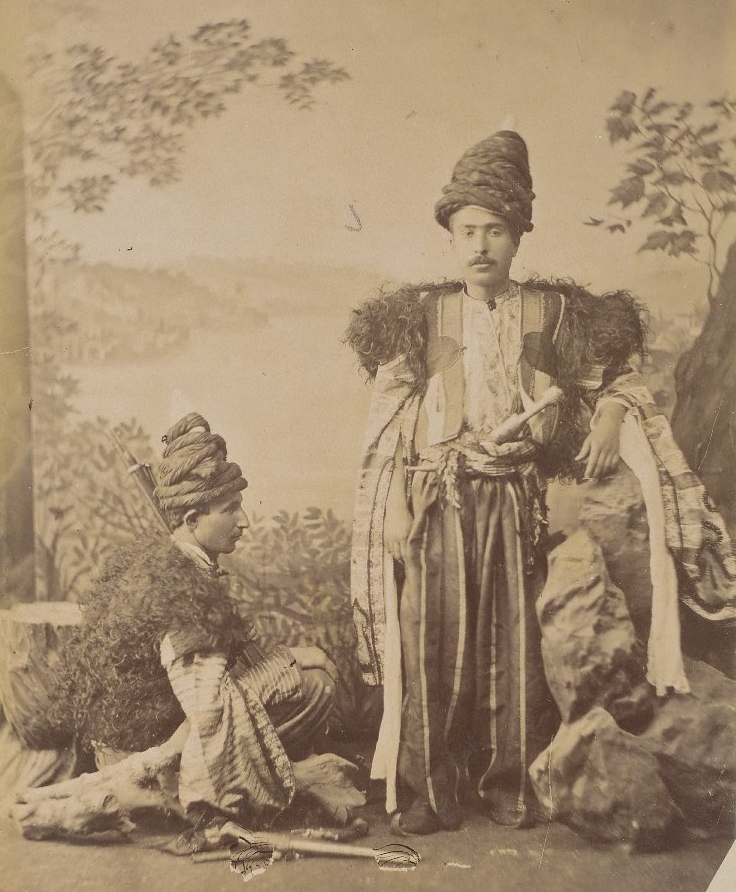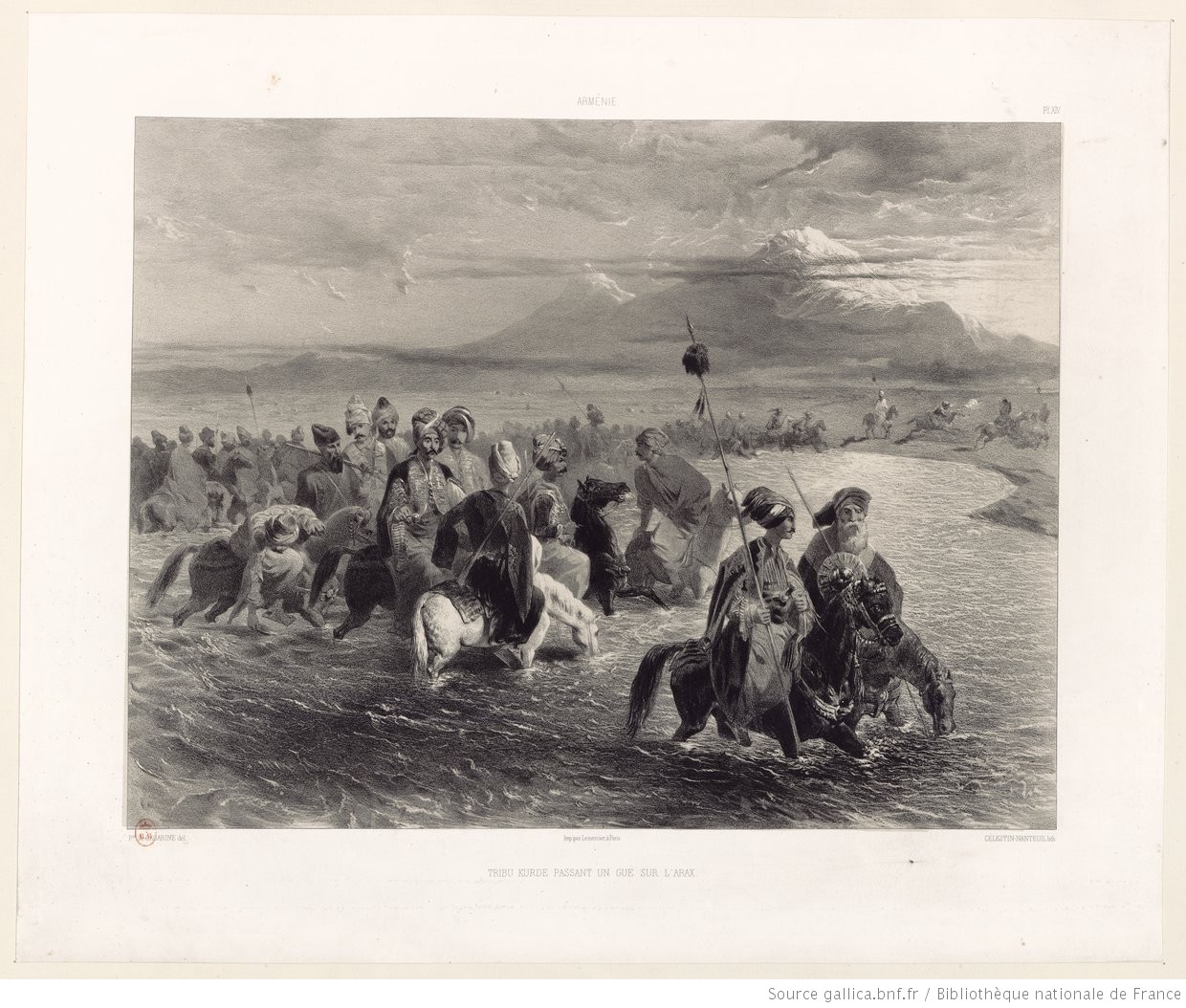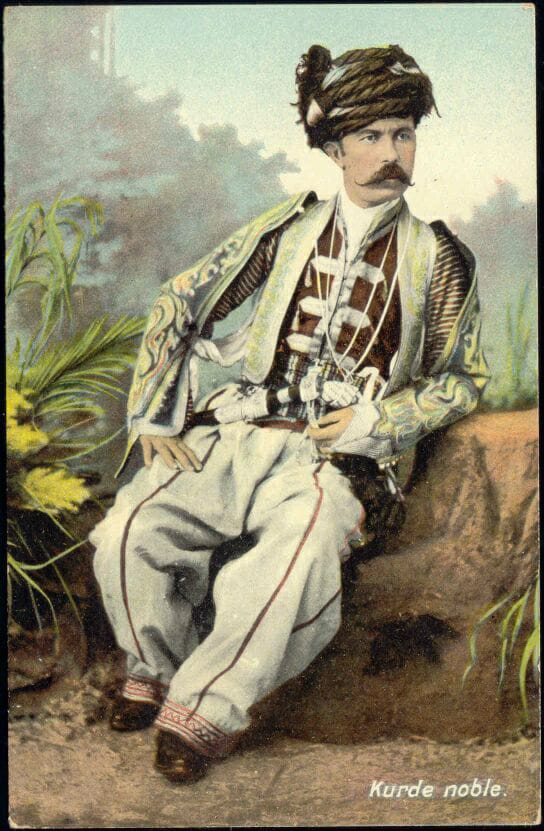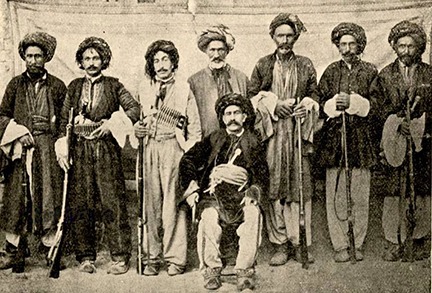
HOW DID THE KURDS BECOME OTTOMAN CITIZENS?
In Eastern and Southeastern Anatolia, the Kurds, an Iranian-origin ethnic group, have been living for 2500 years. Many of them converted to Islam through Arab conquests. Starting from the Battle of Manzikert (Malazgirt), they allied with the new conquerors of the region and descended to the plains. The plain dwellers (Armenians and Assyrians) also migrated to the interior of Anatolia for trade purposes, thanks to the tolerance brought by the Turks. The Byzantines, due to their different religious denomination, did not allow them to enter the western regions.
The Contributions of Idris Bitlisi
When Sultan Selim I embarked on the Campaign of Chaldiran, he passed through Eastern Anatolia. In this region, there were several autonomous beyliks (principalities) which were mostly Kurdish and adhered to the Shafi'i Islamic school of thought (one of four madhabs of Islamic jurisprudence), while some were Turkmans.The Ottomans did not consider annexing this region as long as these beyliks did not pose a problem. However, the Kurdish beyliks saw the Ottomans as saviors against the pressure imposed by Shiite Iran, and the idea of securing the Eastern border through this alliance was appealing to the Ottomans.
During this campaign, the renowned scholar Idris Bitlisi was also in the entourage of the Sultan. He was a student of Mawlana Jami and had served as a scribe in the Aq Qoyunlu palace in Tabriz. Despite being invited by the Safavids, who had toppled the Aq Qoyunlu State, Idris Bitlisi rejected their invitation and sought refuge with the Ottomans. Sultan Bayezid II held him in high regard. During the Chaldiran Campaign, Idris Bitlisi encouraged the local Kurdish chieftains to support the Ottoman Empire. After the Battle of Chaldiran, when the Iranians besieged Diyarbekir, more than 25 Kurdish lords submitted a signed petition (ariza) to the Ottoman Sultan through Idris Bitlisi. In this petition, they sought assistance and expressed their inability to find peace until their region was incorporated into the Ottoman Empire.

The following sentences in the petition are noteworthy: "Without your protection, we cannot deal with the Iranians on our own. Kurds live in separate tribes, and unless we recognize that we are united as the followers of Allah and the Prophet Muhammad, we cannot be in harmony on other matters. That is Allah's way. However, we hope that with the Sultan's help, the hands of those oppressors from Arab and Persian Iraq and Azerbaijan will be cut off. Especially Diyarbekr, which is the key to Iran and the capital of the Aq Qoyunlu, has been under the occupation of the Qizilbashs (members of one of the extremist branches of Shia) for a year. They have killed more than 50,000 people. If the Sultan's assistance reaches these Muslims, both heavenly rewards and worldly benefits can be expected."
The mosques had already started reading the Friday sermons in the name of the Sultan. With the participation of Idris Bitlisi and his volunteers, an army of ten thousand people liberated Diyarbekr. Thus, Eastern and Southeastern Anatolia voluntarily came under Ottoman rule. The Sultan rewarded Idris Bitlisi for his services and granted firmans to the beyliks that willingly submitted to the Ottoman Empire. Shortly after, Arab tribes in Iraq, Syria, and Palestine sent similar petitions to the Sultan, expressing their desire to join the Ottoman Empire. It appears that during that time, Ottoman citizenship held the same prestige as modern American citizenship. [Idris Bitlisi, who was a qazasker (chief judge) at the time, passed away in Istanbul in 1520 at the age of 65. His famous work on Ottoman history, "Hasht Behesht" (Eight Heavens), is well-known.]

A New Order in the East
Diyarbekr was established as an eyalet (province), followed by the establishment of the Van eyalet, encompassing various beyliks that were incorporated into these provinces. Qadis (judges) were appointed centrally to oversee these regions. In some cases, the right to collect land rent belonged to the bey (local ruler) and their family, and it was not taken back unless there was a breach of loyalty. Diyarbekr had 13 beyliks, and Van had 9. Among them were Sağman, Kulp, Itak, Tercil, Mihrani, Pertek, Çapakçur, Çermik, Müküs, and Bargiri sanjaks (sub-provinces), some of which were considered as the property of the bey and their family.
In Diyarbekr, there were the sanjaks of Hazzo, Cizre, Genç, Eğil, and Palu; in Van, there were Bitlis, Hizan, Mahmudi, and Hakkari; in Shahrzor, there was Imadiya, and in Çıldır, there were four sancaks following similar administrative methods. In each of these sanjaks, the bey would pay a specified tax and provide soldiers to the central government. During times of war, they would join the beylerbeyi (provincial governor) of their respective eyalet and participate in military campaigns. A similar system of administration was also applied to the Arab sheikhdoms. It should not be assumed that Kurds were the majority throughout the region. In Diyarbekr and Van, there were still significant Armenian and Syriac communities, with Turks forming the majority. Only in Hakkari, where the population was predominantly Kurdish, it was referred to as Kurdistan Sanjak.
Thanks to the Ottomans, Kurds were able to preserve their religious sects, language, and traditions. Through this, many from various religions such as Yazidis and Christians also converted to Islam. Educational centers were established in the region to counter Iranian propaganda. The scholarly figures known as sheikhs played a significant role in the social life of the agrarian and livestock-raising population. The bey would protect and care for the people, while showing respect to the sheikhs.
It is claimed by Marxists that the system defended here is feudalism, but thanks to this system, while almost fifty revolts erupted in other Turkish provinces of Anatolia, there were no significant problems in the East until the abolition of the autonomy during the reign of Sultan Mahmud II. The British-supported uprisings of led by some Kurdish beys like Bedirhan Bey were not driven by nationalism but were motivated by the abolition of this autonomy. The increasing influence and power of the Armenians, who won tenders to collect rents from state-owned lands, contributed to the growing unrest and envy.

Sultan Abdulhamid II attempted to establish a balance through the Hamidiya Regiments. The Russians had long envisioned creating an Armenian state in Eastern Anatolia and Cilicia to gain control and reach the Mediterranean. To counter this, the British incited Kurds against Armenians to prevent the realization of this Russian plan.
In 1915, Armenians were deported. The Turkification policy of the Young Turks generated nationalist intellectuals among the Kurds, similar to what happened among Arabs. However, due to their modern ideas, these intellectuals did not gain much popularity among the conservative population. Several uprisings that emerged for economic reasons were harshly suppressed.
After World War I, the British abandoned the autonomy they had promised to the Kurds, which they had previously offered. The constitution of the Ankara government in 1921 promised autonomy to the Kurds. However, this was not even mentioned in the 1924 constitution. The Kurdish uprisings during the Republican era were largely a result of exaggerating minor incidents by local authorities.
Önceki Yazılar
-
IF SULTAN MEHMED II HE HAD CONQUERED ROME…17.12.2025
-
VIENNA NEVER FORGOT THE TURKS10.12.2025
-
THE FIRST UNIVERSITY IN THE WORLD WAS FOUNDED BY MUSLIMS3.12.2025
-
WHO BETRAYED PROPHET ISA (JESUS)?26.11.2025
-
IT HAS BEEN MORE THAN 100 YEARS SINCE ITS ABOLITION, BUT... IS THE CALIPHATE BEING REESTABLISHED?19.11.2025
-
GREETINGS TO YOU, O OTTOMAN SANJAK!…12.11.2025
-
ROTHSCHILDS BROUGHT THE END OF THE OTTOMAN EMPIRE!5.11.2025
-
SHEIKH BEDREDDIN, SON OF THE QADI OF SIMAVNA29.10.2025
-
THE ROOTS OF THE ENGLISH POLITICIAN IN TURKEY – THE TRAGIC END OF ALI KEMAL BEY22.10.2025
-
WHERE IS THE RED APPLE?15.10.2025